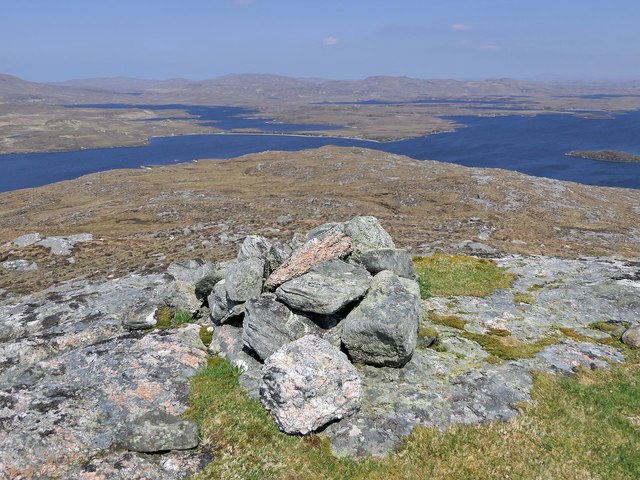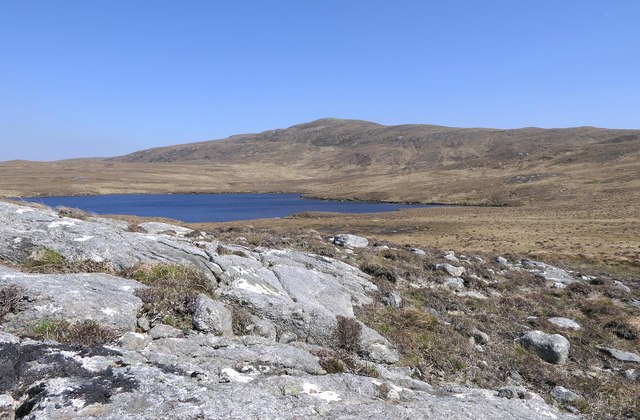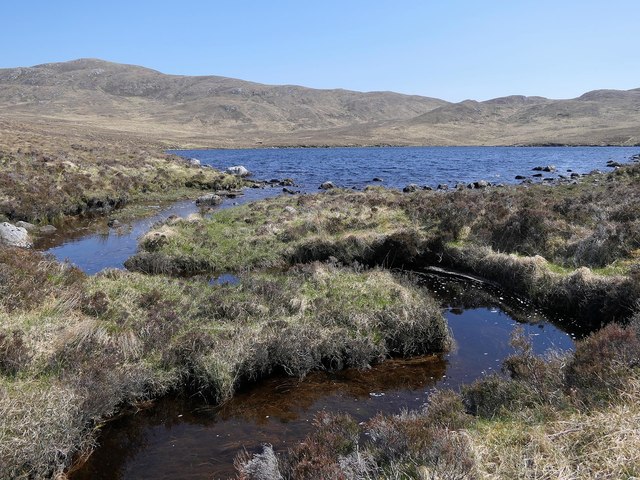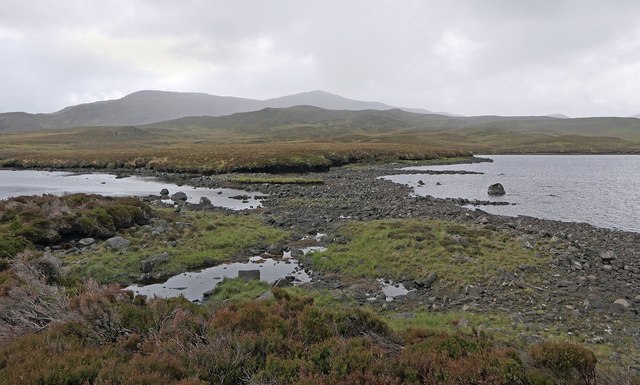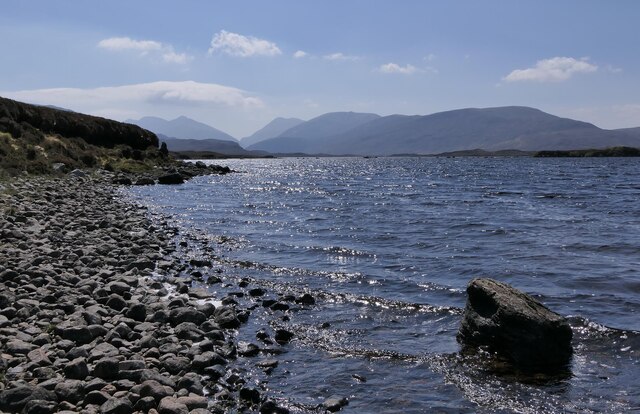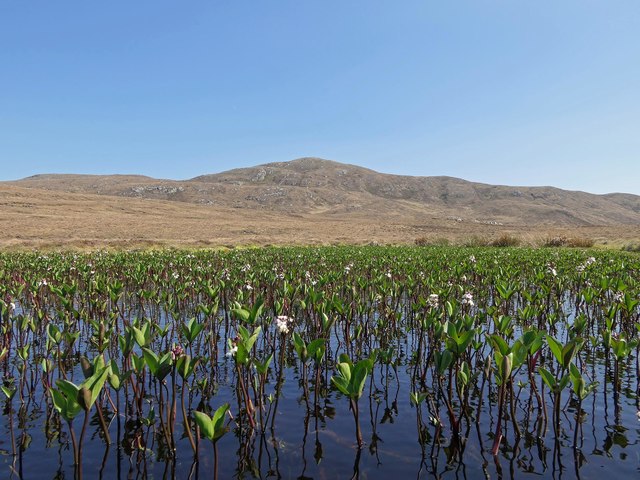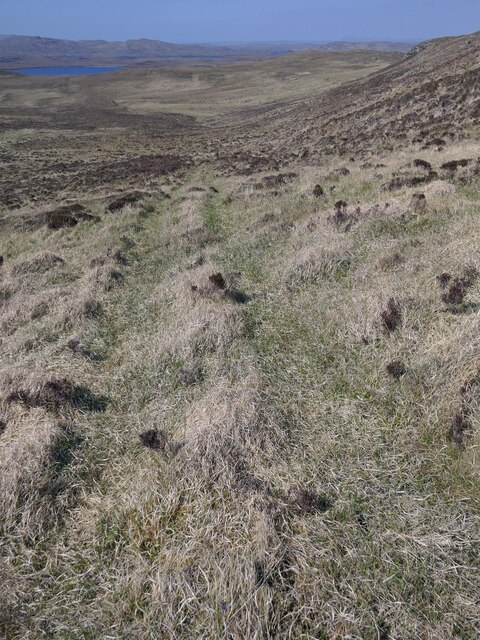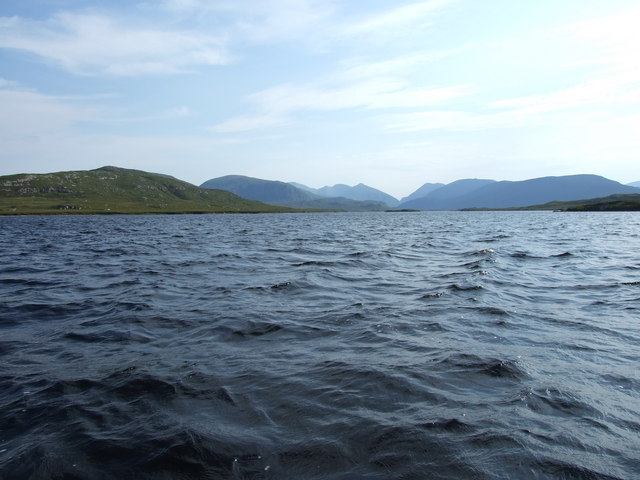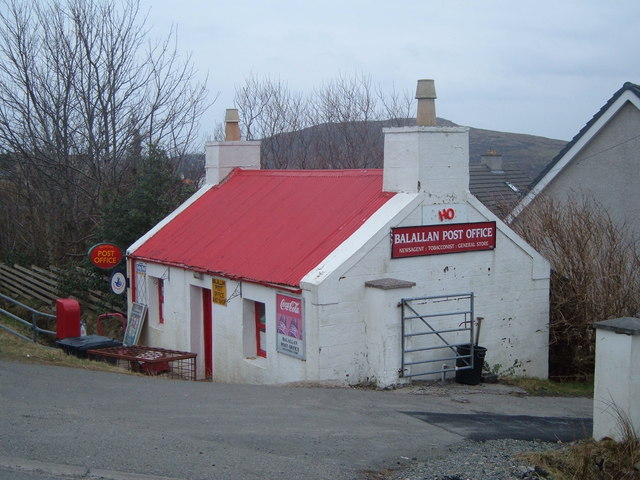Loch Langabhat
Lake, Pool, Pond, Freshwater Marsh in Ross-shire
Scotland
Loch Langabhat
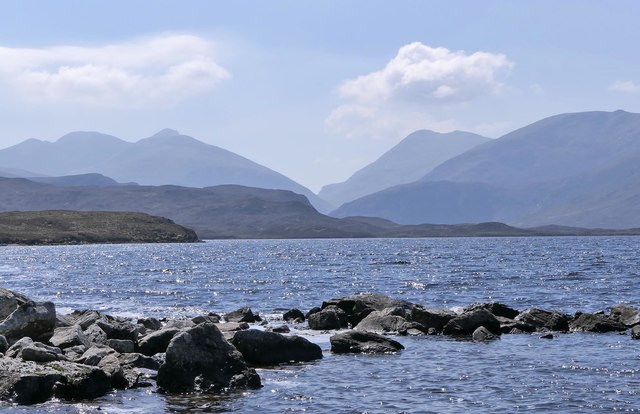
Loch Langabhat is a picturesque freshwater lake located in the county of Ross-shire, Scotland. Nestled within the rugged and stunning landscape of the Western Isles, this natural wonder is a popular destination for both locals and tourists alike.
Covering an area of approximately 4 square kilometers, Loch Langabhat is surrounded by rolling hills and breathtaking views. Its calm and clear waters make it an ideal spot for various recreational activities such as fishing, boating, and wildlife watching.
The lake is fed by several small streams and rivers that flow from the surrounding mountains, ensuring a constant supply of fresh water. This, in turn, supports a diverse ecosystem, making Loch Langabhat a haven for a wide range of flora and fauna.
The surrounding area of Loch Langabhat is characterized by lush greenery and a mix of heather-covered moorland and native woodlands. This diverse habitat provides ample opportunities for nature enthusiasts to explore and discover the rich biodiversity of the region.
Birdwatchers will be delighted by the presence of various waterfowl species, including goldeneye, tufted duck, and great crested grebe. The lake is also home to a population of brown trout, attracting anglers who enjoy fishing in its tranquil waters.
Due to its remote location, Loch Langabhat offers visitors a sense of tranquility and a chance to immerse themselves in the beauty of the Scottish wilderness. Whether it's admiring the stunning vistas, exploring the surrounding trails, or simply enjoying a peaceful picnic by the water's edge, Loch Langabhat is a must-visit destination for nature lovers and outdoor enthusiasts.
If you have any feedback on the listing, please let us know in the comments section below.
Loch Langabhat Images
Images are sourced within 2km of 58.075432/-6.7728126 or Grid Reference NB1819. Thanks to Geograph Open Source API. All images are credited.
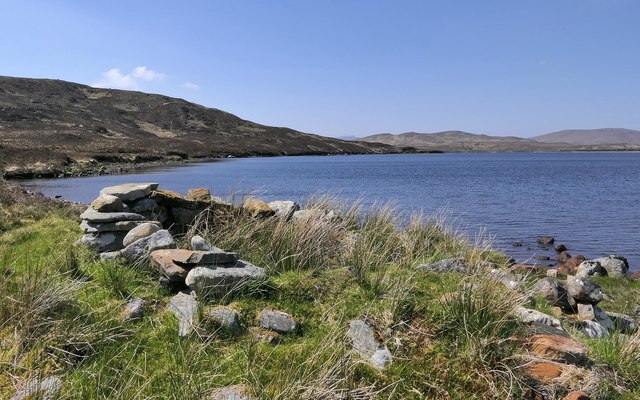
Loch Langabhat is located at Grid Ref: NB1819 (Lat: 58.075432, Lng: -6.7728126)
Unitary Authority: Na h-Eileanan an Iar
Police Authority: Highlands and Islands
What 3 Words
///vanished.rattled.documents. Near Leurbost, Na h-Eileanan Siar
Nearby Locations
Related Wikis
Eilean Mòr, Loch Langavat
Eilean Mòr is an island in Loch Langavat on the Isle of Lewis in the Outer Hebrides of Scotland. == Footnotes ==
Airidh a' Bhruaich
Airidh a' Bhruaich (Arivruaich - anglicised) is a scattered crofting township in the South Lochs district of the Isle of Lewis in the Outer Hebrides of...
Gisla Hydro-Electric Scheme
Gisla Hydro-Electric Scheme was a small scheme promoted by the North of Scotland Hydro-Electric Board on the Isle of Lewis, Outer Hebrides, Scotland. It...
Seaforth Island
There is also a Seaforth Island in the Whitsunday Islands of Queensland, AustraliaSeaforth Island (Scottish Gaelic: Eilean Shìphoirt/Shìophoirt or Mulag...
Ardvourlie Castle
Ardvourlie Castle is a 19th-century country house on Harris, one of the Western Isles off the north-west coast of Scotland. The house was built beside...
Balallan
Balallan (Scottish Gaelic: Baile Ailein, Bail' Ailein), meaning "Allan's Town", is a crofting township on the Isle of Lewis, in the Outer Hebrides, Scotland...
Have you been to Loch Langabhat?
Leave your review of Loch Langabhat below (or comments, questions and feedback).
